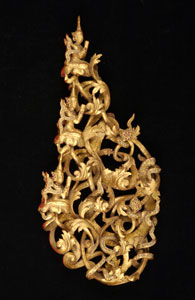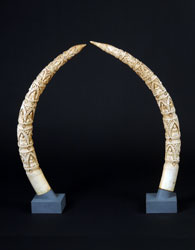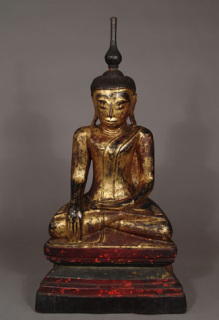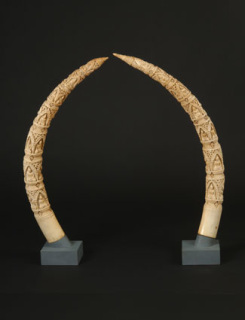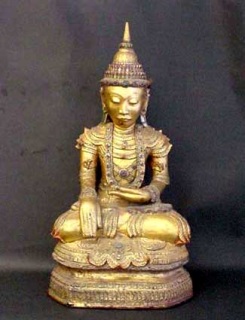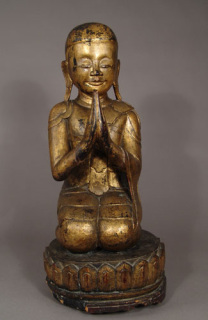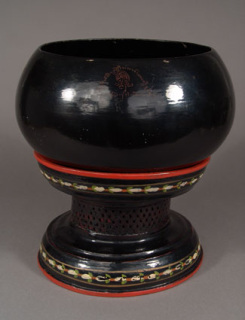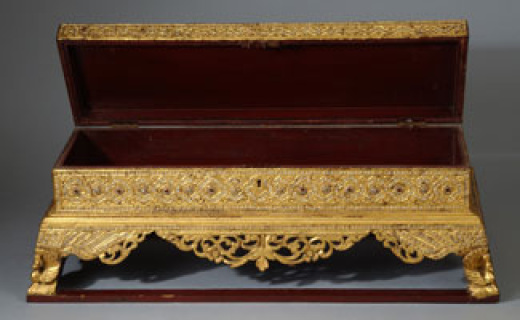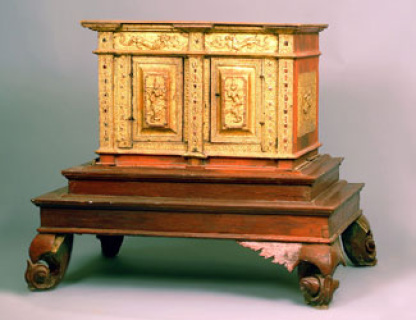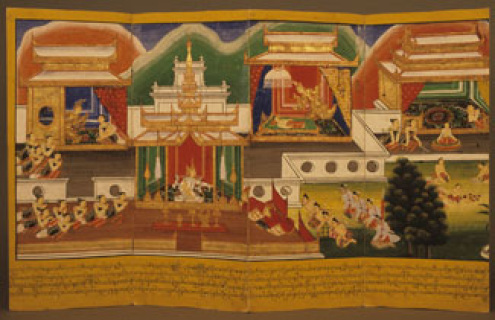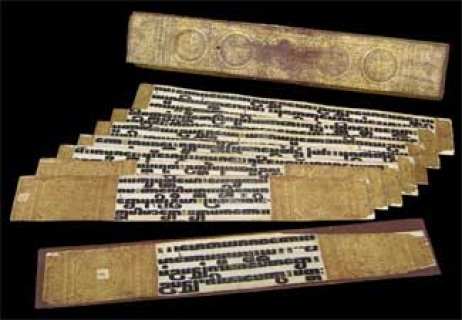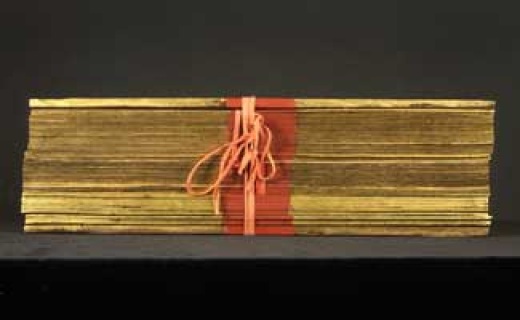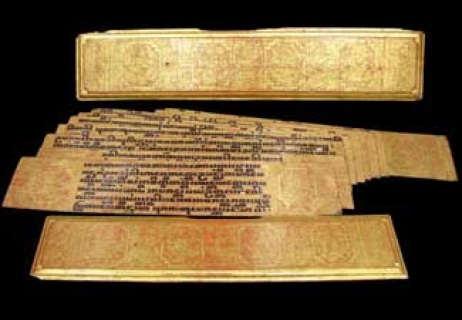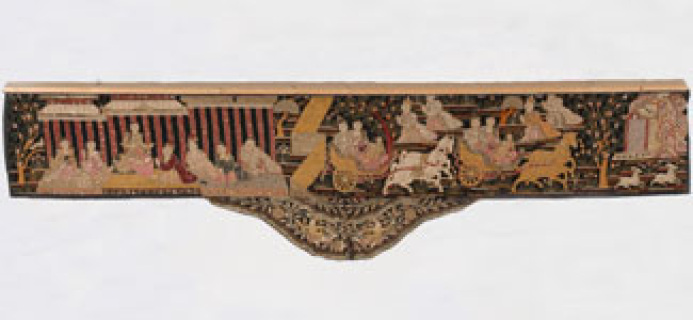The Transmission of Religious Knowledge
|
Buddhist knowledge was transmitted in a wide variety of ways. Burma was once highly literate, and this is amply demonstrated by the extensive numbers and types of manuscripts in existence. Often produced in monastery workshops, parabaik (an illustrated manuscript on paper), lacquer books such as kammawaza, and works on gold, ivory, copper, and palm leaf described and portrayed many of the canonical and Burmese concepts of Buddhism. The expense of producing manuscripts made such objects highly valuable, and manuscript chests (sadaik) and stands were made to house and protect the written texts. Monasteries throughout the country kept such items, and functioned as repositories of Buddhist knowledge.
Burmese monks played an extensive role in the transmission of Buddhism throughout the country. Not only were monks sent by the court to standardize the Buddhism practiced in Burma, but some traveled abroad to other religious centers to ensure the standardization of the religion. Manuscripts would have been carried to different Buddhist areas by the monks, thereby enabling the exchange of ideas and visual images, as well as the consolidation of religious beliefs. Specific monks traveling through Asia, such as Shin Upago and Shin Thiwali, have been mythologized by the Burmese, and they are now also attributed with protective and other beneficial functions. These figures have been reproduced in paintings, wood carvings, and sculpture. Stories were one of the main ways in which Buddhist concepts were transmitted to lay people and monks. These narratives popularly consisted of tales of the life of the Buddha and the Jataka stories (the Buddha’s previous lives). The Buddha’s last ten lives where he perfected the ten virtues necessary for enlightenment, including the Vessantara and Temiya Jatakas, were frequently represented in art in such diverse forms as lacquer, paper, textile, ceramic, and wood. Functioning as a reminder of how the Buddha reached enlightenment, these stories would have provided the viewers with information on the appropriate behavior for eventually achieving enlightenment. |
